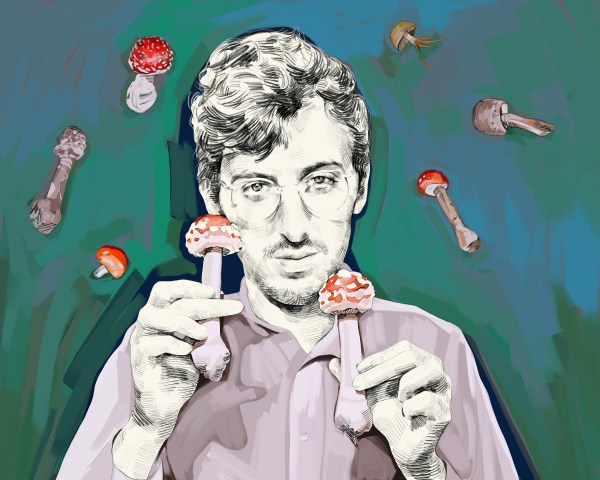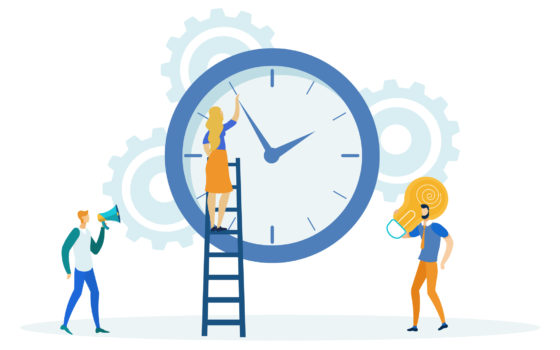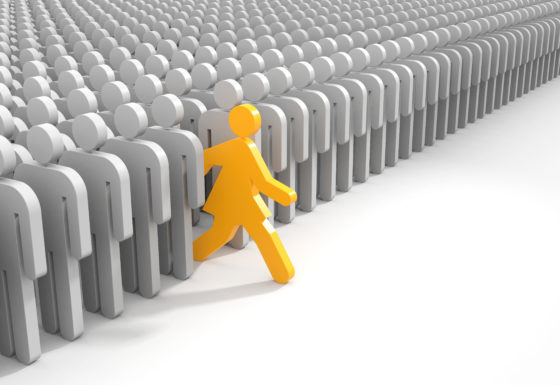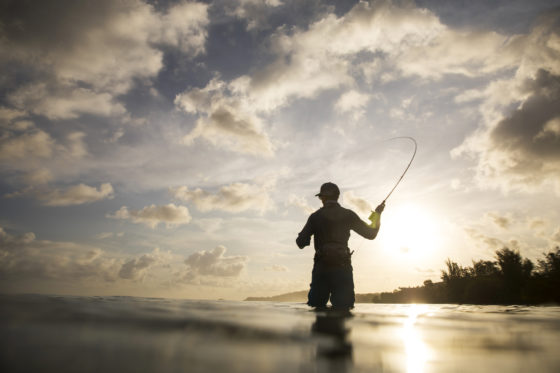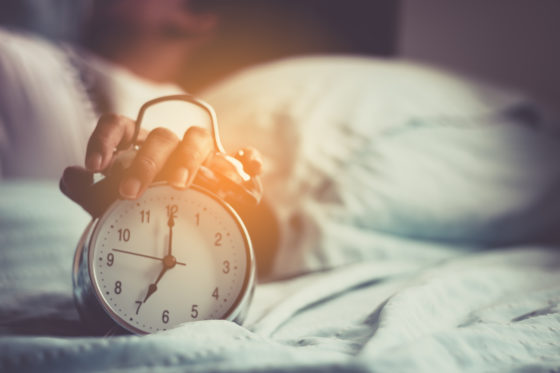Illustration via 99designs
“It’s a very widespread idea that if you have personal experience with a psychoactive drug, this biases you in such a way that the research that you do is not trustworthy. But this is something that we don’t evenly apply to other disciplines. No one would ever say that an ethnomusicologist is biased because they’ve listened to music, or because they enjoy music themselves. Or that a sports commentator is biased if they have a past as an athlete. Instead, we would say that this is something that makes him an expert who is qualified to discuss the subject.”
— Hamilton Morris
Hamilton Morris (@HamiltonMorris) is a chemist, filmmaker, and science journalist. A graduate of The New School, he conducts chemistry research at The University of the Sciences in Philadelphia.
Hamilton is the writer and director of the documentary series Hamilton’s Pharmacopeia, in which he explores the chemistry and traditions surrounding psychoactive drugs. His research has allowed him to study psychoactive plants, fungi, and chemicals, as well as the culture that surrounds them, in more than 30 countries, using an interdisciplinary approach that combines anthropology and chemistry.
Hamilton’s recent republishing of a book on Bufo alvarius has, at the time of writing, raised more than $205,000 for Parkinson’s disease research.
Please enjoy!
Listen to the episode on Apple Podcasts, Spotify, Overcast, Stitcher, Castbox, Google Podcasts, or on your favorite podcast platform.
Brought to you by Dry Farm Wines natural wines designed for fewer hangovers, LMNT electrolyte supplement, and Oura smart ring wearable for personalized sleep and health insights. More on all three below.
https://rss.art19.com/episodes/28968eba-fd27-4dcb-8edc-8485d871e9ba.mp3Download
This episode is brought to you by Dry Farm Wines. I’m a wine drinker, and I love a few glasses over meals with friends. That said, I hate hangovers. For the last few months, all of the wine in my house has been from Dry Farm Wines. Why? At least in my experience, their wine means more fun with fewer headaches. Dry Farm Wines only ships wines that meet very stringent criteria: practically sugar free (less than 0.15g per glass), lower alcohol (less than 12.5% alcohol), additive free (there are more than 70 FDA-approved wine-making additives), lower sulfites, organic, and produced by small family farms.
All Dry Farm Wines are laboratory tested for purity standards by a certified, independent enologist, and all of their wines are also backed by a 100% Happiness Promise—they will either replace or refund any wine you do not love. Last but not least, I find delicious wines I never would have found otherwise. It’s a lot of fun. Dry Farm Wines has a special offer just for listeners of the podcast—an extra bottle in your first box for just one extra penny. Check out all the details at DryFarmWines.com/Tim.
This episode is brought to you by Oura! Oura is the company behind the smart ring that delivers personalized sleep and health insights to help you optimize just about everything. I’ve been using it religiously for at least six months, and I was introduced to it by Dr. Peter Attia. It is the only wearable that I wear on a daily basis.
With advanced sensors, Oura packs state-of-the-art heart rate, heart-rate variability, temperature, activity, and sleep monitoring technology into a convenient, noninvasive ring. It weighs less than 6 grams and focuses on three key insights—sleep, readiness, and activity.
Try it for yourself. The Oura Ring comes in two styles and three colors: Silver, Black, and Matte Black. For $299, you can give or get the gift of health by visiting OuraRing.com.
This episode is brought to you by LMNT! What is LMNT? It’s a delicious, sugar-free electrolyte drink-mix. I’ve stocked up on boxes and boxes of this and usually use it 1–2 times per day. LMNT is formulated to help anyone with their electrolyte needs and perfectly suited to folks following a keto, low-carb, or Paleo diet. If you are on a low-carb diet or fasting, electrolytes play a key role in relieving hunger, cramps, headaches, tiredness, and dizziness.
LMNT came up with a very special offer for you, my dear listeners. They’ve created Tim’s Club: Simply go to DrinkLMNT.com/Tim and select “Subscribe & Save” on any 30-count box of LMNT for only $36. This will be valid for the lifetime of the subscription and you can pause it anytime. And perfect for the warm days, they have a new flavor, Watermelon Salt, which I’ve been rather enjoying.
What was your favorite quote or lesson from this episode? Please let me know in the comments.
SCROLL BELOW FOR LINKS AND SHOW NOTES…
Would you like to hear my last conversation with Hamilton Morris? Listen here as we discuss basic chemistry literacy for the layman, the value of substance-induced spiritual experiences for those who don’t consider themselves spiritual, the difference between a medicine and a poison, a cautionary tale about the unsupervised use of 5-MeO-DMT, compound harvesting sustainability, and much more.
https://rss.art19.com/episodes/075a784d-842a-4275-85e8-706db7dfe572.mp3Download
SELECTED LINKS FROM THE EPISODE
Connect with Hamilton Morris:
Patreon | Twitter | Instagram | Facebook
Bufo Alvarius: The Psychedelic Toad of the Sonoran Desert by Ken NelsonHamilton’s Pharmacopeia | Prime VideoHamilton Morris on Better Living Through Chemistry: Psychedelics, Smart Drugs, and More | The Tim Ferriss Show #337The Last Interview With Alexander Shulgin by Hamilton Morris and Ash Smith | VicePiHKAL (Phenethylamines I Have Known and Loved): A Chemical Love Story by Alexander Shulgin and Ann ShulginTiHKAL (Tryptamines I Have Known and Loved): A Continuation by Alexander Shulgin and Ann ShulginThis Genius Chemist Spent 50 Years Creating Psychedelic Drugs in His Home Lab…for a Good Cause | TimelineThe War on Drugs, Explained | VoxMDMA (Ecstacy) | US National Library of MedicineMDMA-Assisted Psychotherapy | MAPSIntroduction to the Federal Controlled Substance Analogue Act | The Vaults of ErowidDMT Models the Near-Death Experience | Frontiers in PsychologyUltra LSD | Hamilton’s PharmacopeiaThe Nature of Drugs: History, Pharmacology, and Social Impact by Alexander ShulginThe World’s Largest Psychedelic Research Center | The Tim Ferriss Show #385What You Should Know About Capsaicin Cream | Verywell HealthNeuropsychedelia: The Revival of Hallucinogen Research Since the Decade of the Brain by Nicolas LanglitzChimpanzee Culture Wars: Rethinking Human Nature Alongside Japanese, European, and American Cultural Primatologists by Nicolas LanglitzUR-144 | The Drug ClassroomThe Drug of Choice for the Age of Kale: How Ayahuasca, an Ancient Amazonian Hallucinogenic Brew, Became the Latest Trend in Brooklyn and Silicon Valley | The New YorkerNicotine | US National Library of MedicineIbogaine | US National Library of Medicine2C-D | The Vaults of ErowidThe Man Who Mistook His Wife For A Hat: And Other Clinical Tales by Oliver SacksPCP | The Vaults of ErowidThe Effects of Amphetamine and Methamphetamine on the Release of Norepinephrine, Dopamine and Acetylcholine From the Brainstem Reticular Formation | Frontiers in NeuroanatomyAnd How Are You, Dr. Sacks? by Lawrence WeschlerMarihuana Reconsidered: The Most Thorough Evaluation of the Benefits and Dangers of Cannabis by Lester GrinspoonPsychiatrist Lester Grinspoon Smoked Pot with Carl Sagan — A Lot | ViceUncle Tungsten: Memories of a Chemical Boyhood by Oliver SacksWhat the *&^% is Audio Verité? | The Continuing Education of Javier C.Hallucinations by Oliver SacksThe Healing Journey: Pioneering Approaches to Psychedelic Therapy by Claudio NaranjoSacred Knowledge: Psychedelics and Religious Experiences by William RichardsWilliam Richards, PhD Administers DPT to a Terminal Cancer Patient | 60 MinutesDPT | The Vaults of ErowidKetamine for Major Depression: New Tool, New Questions | Harvard Health BlogCannabinoid Hyperemesis Syndrome | Cedars-SinaiIbogaine Therapy for Drug Addiction | MAPSWhat’s the Difference Between Iboga and Ibogaine? | Psychedelic TimesSynthetic Ibogaine — Natural Tramadol | Hamilton’s PharmacopeiaBwiti | WikipediaTrainspotting | Prime VideoRequiem for a Dream | Prime VideoChristiane F. Movie Review | Roger EbertPermanent Midnight | Prime VideoIs Tramadol a Risky Pain Medication? | Harvard Health BlogDying to Get Clean: Is Ibogaine the Answer to Heroin Addiction? | The GuardianDr. Deborah Mash Talks About the Unique Power of Ibogaine Therapy for Drug Addiction | Psychedelic TimesSensory Deprivation Tank: Effects and Health Benefits | HealthlineMechanism of hERG Channel Block by the Psychoactive Indole Alkaloid Ibogaine | Journal of Pharmacology and Experimental TherapeuticsDrug-Induced QT Prolongation | US PharmacistPangolin Scale Medicines No Longer Covered by Chinese Insurance | National GeographicWe Asked People in Vietnam Why They Use Rhino Horn. Here’s What They Said | The ConversationExpanding Ancestral Knowledge Beyond the Sale of Molecules: Iboga and Ibogaine in the Context of Psychedelic Commercialization | MAPSWhy Sustainability Should Be Important to Medical Students | The BMJAn Urgent Plea to Users of Psychedelics: Let’s Consider a More Ethical Menu of Plants and Compounds | Tim Ferriss5-MeO-DMT | The Drug ClassroomEcstasy (MDMA) Threatens Rare Cambodian Tree | TreehuggerAmerica Can End Its War on Drugs. Here’s How. | VoxThe Sunshine Makers | Prime VideoHow to Dispose of Chemicals Properly: A Safe Chemical Disposal Guide | My New LabDrug Discrimination and the Case Against Casey Hardison | Transform Drug Policy Foundation Blog12 Principles of Green Chemistry | American Chemical SocietyDIY Mescaline: How to Explore San Pedro Without a Guide by Jerry Toth | MediumKambo: The Controversial Drug Derived from Stressed-Out Frogs | The GuardianThe Psychedelic Toad | Hamilton’s PharmacopeiaThe “Rediscovery” of Bufo by Ken Nelson (Al Most) | Sananga CanadaOmni MagazineFacts About Xenon | Live ScienceXenon: The Perfect Anesthetic? | Hamilton’s PharmacopeiaHow Does Xenon Produce Anaesthesia? | NatureWADA Brings In Ban on Xenon and Argon, But Has No Test | BBC NewsScience Behind NBTX-001 | Nobilis TherapeuticsBreatharians: The People Who Think Air Is Food | GQBreathing Xenon to Alter Voice | ChrisKPdotcomHamilton Morris Inhales Xenon Gas | Hamilton MorrisDanger of Nitrous Oxide Drug Abuse is Not a Laughing Matter | Sobriety‘I Was Sexually Abused by a Shaman at an Ayahuasca Retreat’ | BBC NewsPsychedelics and Religion: Entheogens and Spiritual Experiences | Rolling StonePlease Pass the Shaman Sauce: The Uses of Agua De Florida | Follow Your Feel GoodDeath of Diane Linkletter | SnopesBwiti: An Ethnography of the Religious Imagination in Africa by James W. FernandezBooks by Terence McKennaBooks by Paul StametsWizard of the Four Winds: A Shaman’s Story by Dr. Douglas SharonEvolution in the Genus Bufo by W. Frank Blair
SHOW NOTES
Exciting news about the recent discovery of tape recordings from a class psychedelic pioneer Alexander Shulgin taught in 1987 — at a time when the Reagan administration was cracking down on psychedelic research as part of its War on Drugs. [06:56]Why does pharmacologist Dave Nichols consider Alexander Shulgin to have been more of an alchemist than a scientist? [11:24]Where can someone pre-order the first volume of this recently discovered treasure trove from Alexander Shulgin? [13:08]Why Hamilton and I believe that scientists active in the current psychedelic renaissance should be honest about their own consumption of the compounds they’re researching. [13:53]A couple of recommendations for books by anthropologist and science historian Nicolas Langlitz. [17:41]Legal disclaimers, words of caution for anyone choosing their own psychedelic adventures, and how Oliver Sacks has figured in Hamilton’s own journey. [18:30]Why does thunder come after lightning? [22:05]Thoughts on Claudio Naranjo’s The Healing Journey and William Richards’ Sacred Knowledge. [22:32]Why a 60 Minutes segment with William Richards administering DPT to a dying cancer patient in the ’70s brings Hamilton to tears. [24:02]A shout-out to world-class scientists like William Richards, Mary Cusumano, and Roland Griffiths, who have withstood so much resistance to their work over the years in order to improve the lives of countless people. [25:32]Is there anything that worries Hamilton about the acceleration in research of psychedelics — including in the for-profit sector — since our last conversation? [27:58]Why don’t we see Hamilton featured much in the episode where his use of iboga was documented? [32:54]How was it discovered that ibogaine is useful for treating opioid addiction when opioids aren’t even native to the region, and how are local traditions changing since opioids have been introduced? [38:41]Hamilton describes his iboga experience as being “the opposite of sensory deprivation.” Here’s what he observed about its use in the community. [41:52]Do the iboga practitioners notice any cardiac or other health complications in their tradition? [44:53]How sustainable are the plant and animal sources for these compounds? Are any of them endangered? Can any of them be synthesized or sourced in non-invasive ways? [46:11]What advice would Hamilton have for a chemist who wants to synthesize compounds without introducing massive amounts of pollutants into the environment, and how does criminalizing this activity hinder otherwise conscientious chemists from doing the right thing? [56:42]The benefits Hamilton sees in people creating, growing, and harvesting their own food and drugs. [1:00:29]Some recommendations for more sustainable alternatives to popularly used compounds. [1:02:26]If there’s not much evidence to support a long history of indigenous use of the Sonoran Desert toad for its 5-MeO-DMT, where did the idea originate? [1:05:53]Further reasons to be wary of 5-MeO-DMT. [1:09:16]Hamilton talks about his exploration with xenon gas, its rarity and effects, what makes it the seemingly perfect anesthetic, and what I found particularly disturbing about Hamilton’s visit to a xenon clinic. [1:12:12]What would Hamilton like to see more of in the psychedelic space, and can this be applied to Western practices? [1:27:17]We already have horror stories about fly-by-night ayahuasca rent-a-shamans defrauding and sexually abusing tourists. Are there similarly fly-by-night operators dealing in iboga? [1:33:22]Is there such a thing as ritualistic “purity” when it comes to psychedelic traditions? Or do they morph to adapt with the times and circumstances? [1:35:06]Is there anything that worries Hamilton about the current explosion of attention and popularity of the psychedelic space? [1:39:00]What books does Hamilton consider required reading for anyone interested in learning more about psychedelics? [1:40:53]Parting thoughts. [1:43:57]
PEOPLE MENTIONED
Alexander ShulginRonald ReaganDave NicholsNicolas LanglitzOliver SacksClaudio NaranjoLawrence WeschlerLester GrinspoonCarl SaganWilliam RichardsMary CosimanoRoland GriffithsAnnie and Michael MithoeferHoward LotsofDeborah MashNick SandCasey HardisonJeanette RunquistKen NelsonMervyn MazePrinceAdam GazzaleyArt LinkletterTimothy LearyJames W. FernandezTerence McKennaPaul StametsDouglas Sharon
